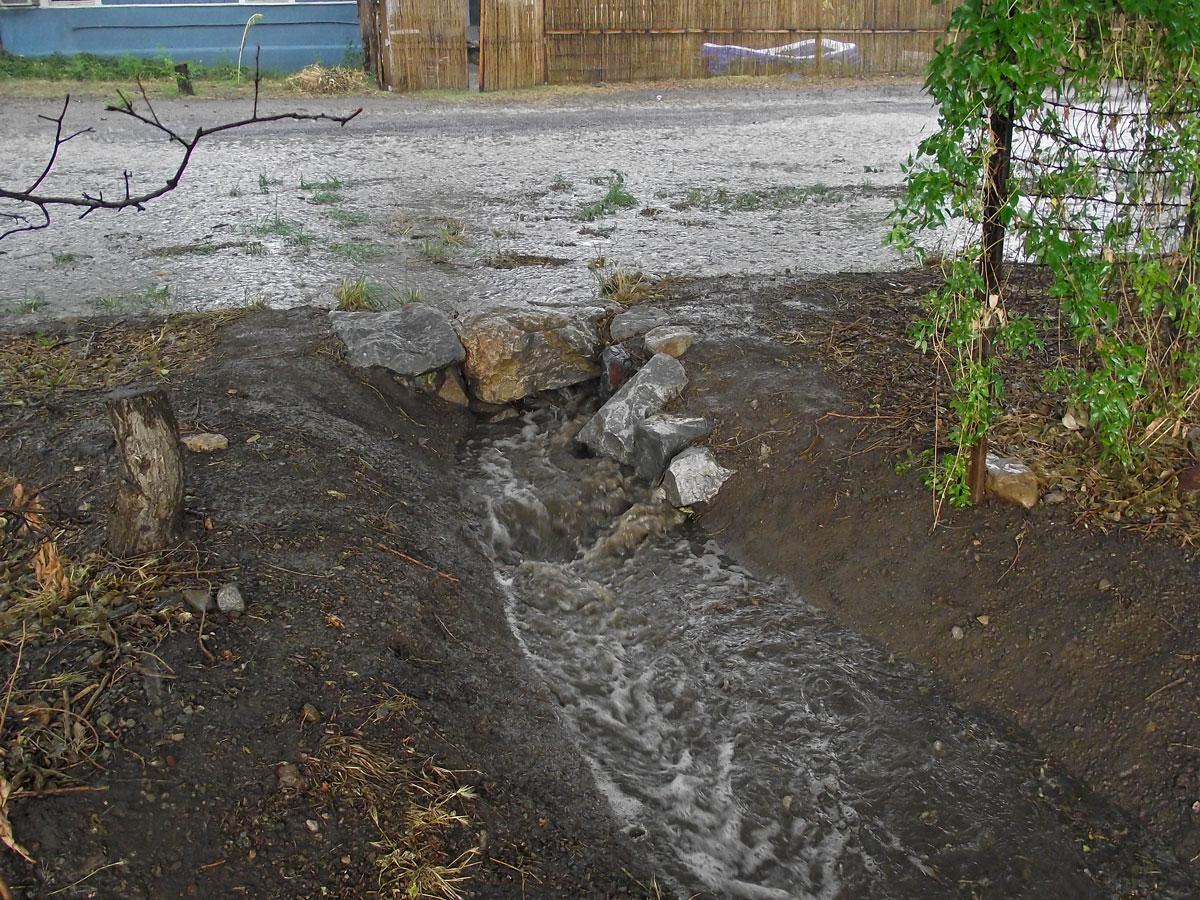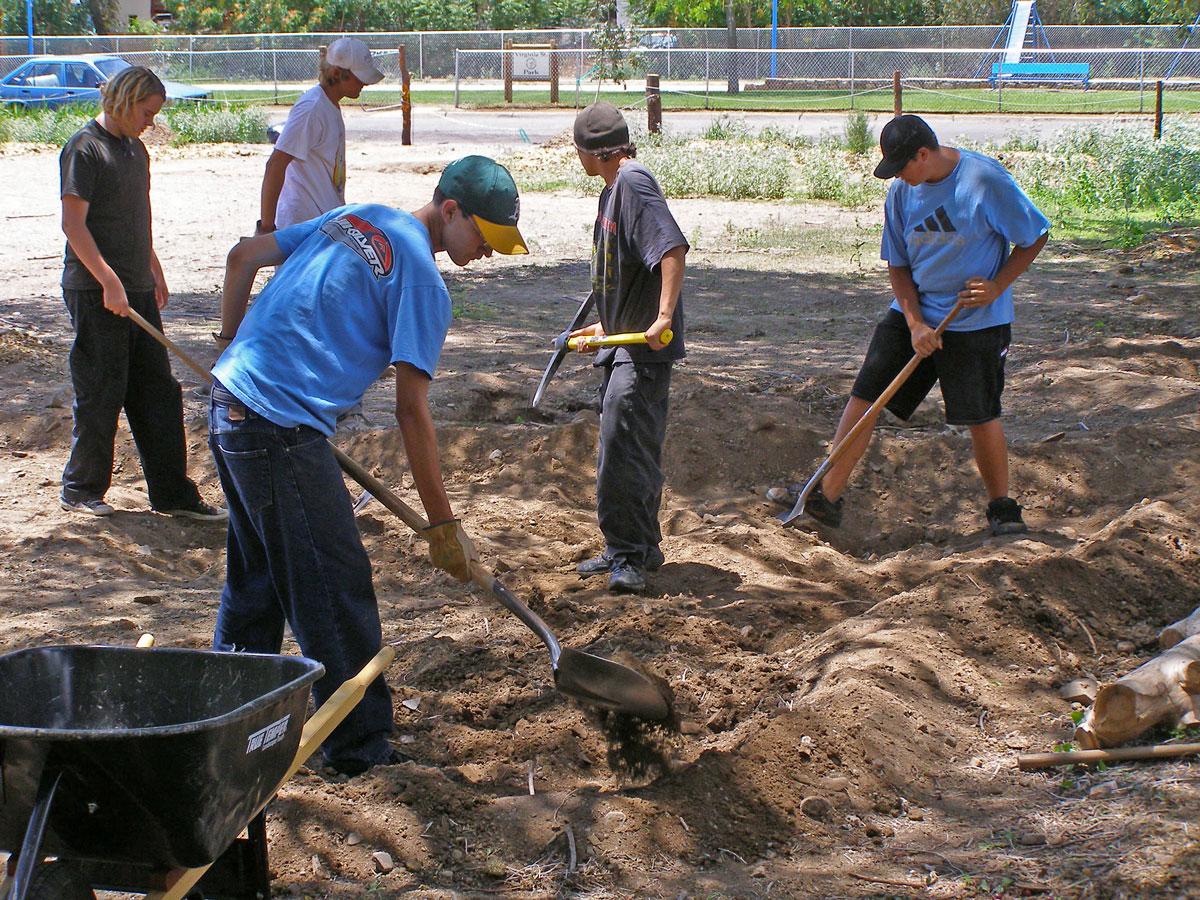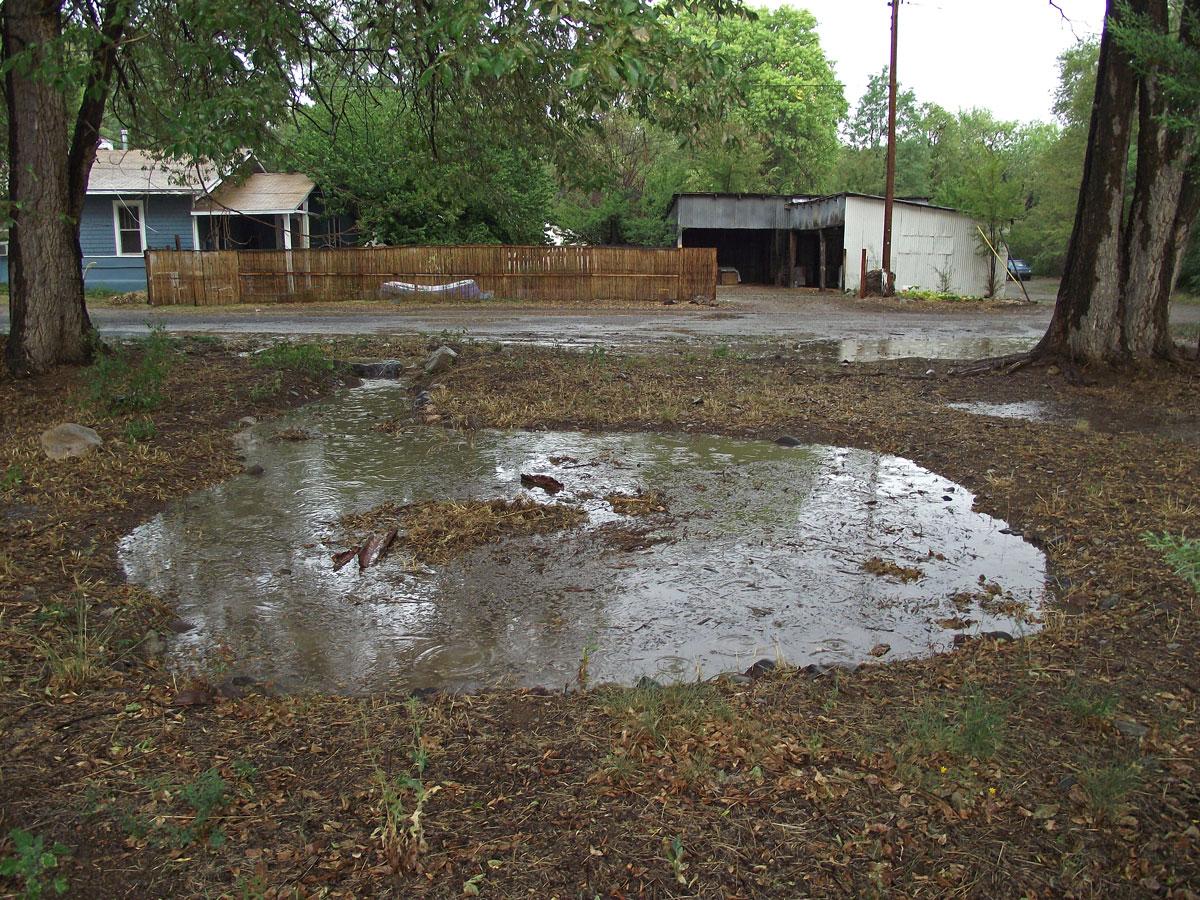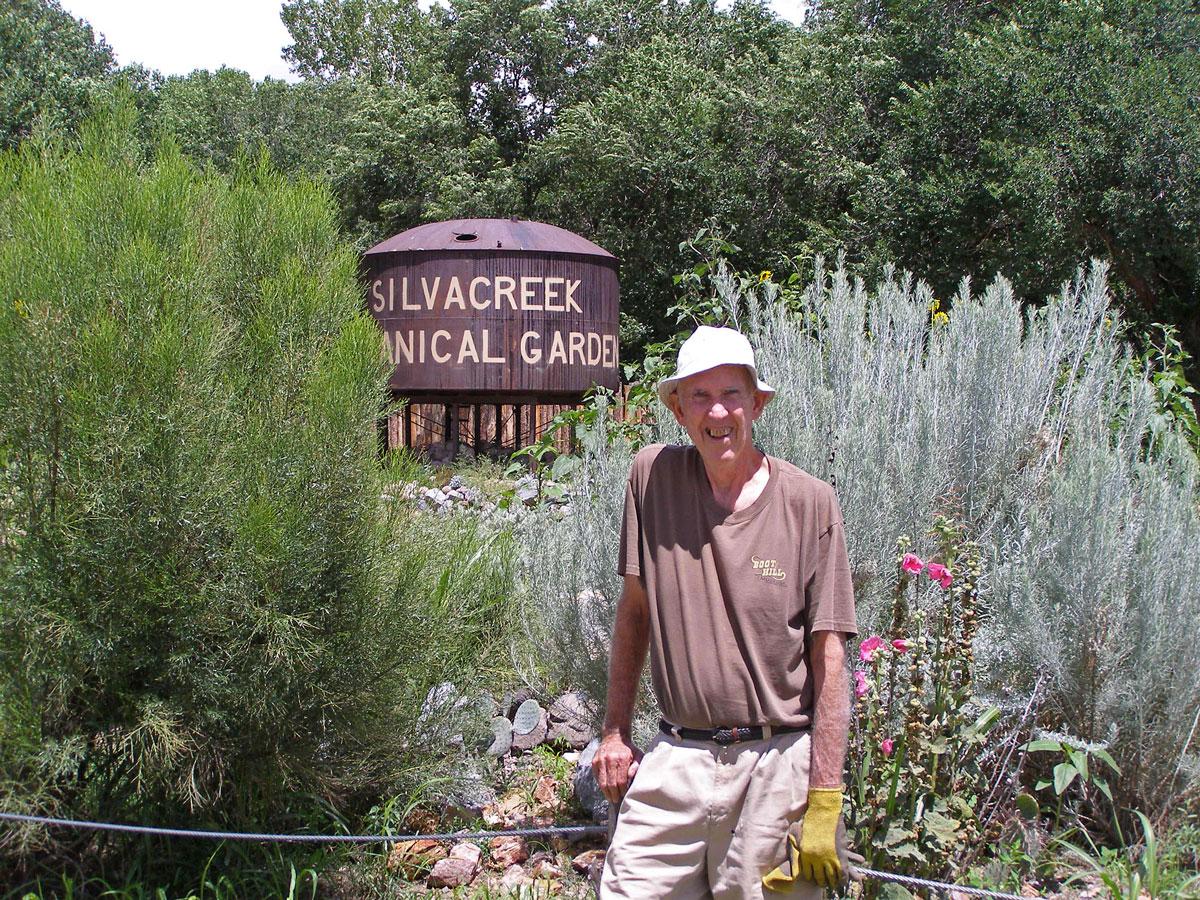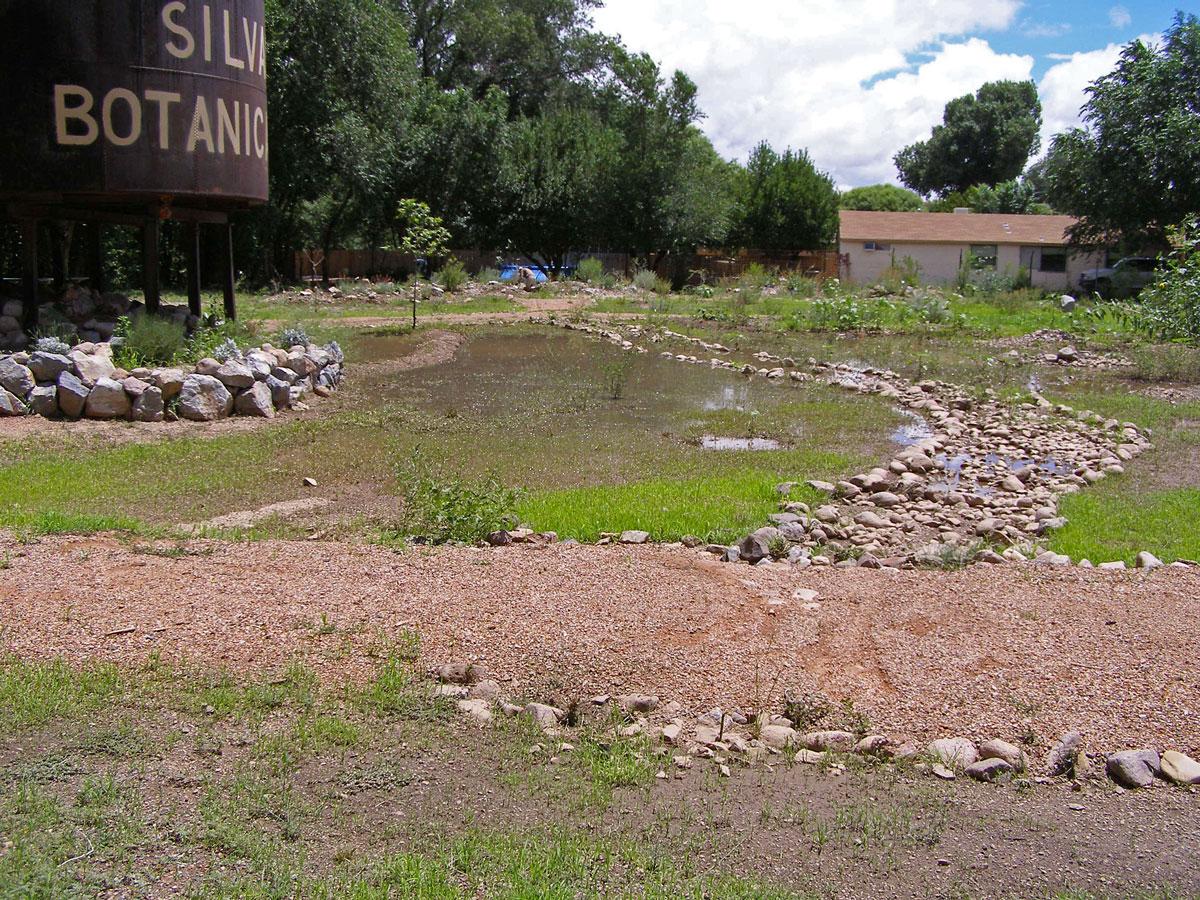This was my first water harvesting project in an urban setting, and it was inspired by Brad Lancaster. I met Brad when I introduced him at his presentation at the 2006 Gila River Festival. His presentation got a bunch of us fired up about urban storm water harvesting.
The Silva Creek Botanical Gardens site is a one acre city-owned property on Virginia Street at the edge of a tributary of the Big Ditch in Silver City. The Big Ditch is where the historic San Vicente Marsh cut to bedrock as a result of cattle grazing, wood cutting, and roads that set the stage for a horrendous erosion event in 1895. Floodwaters "12 feet high and 300 across" ran through the heart of town. When the waters receded the next day, Silver City was left with a ditch 35 feet below street level where Main Street used to be. A second flood in 1903 deepened the ditch to 55 feet, and widened it to take property on both sides of the street. A section of the ditch through downtown has now become a park with paths, picnicking areas, and foot bridges.
Silva Creek, a tributary of the Big Ditch, has cut to 20 feet deep. At the project site, runoff from a 75 acre urban neighborhood goes in a drainage ditch and off a steep eroding bank into Silva Creek. Flood flows from a two inch rain in a 75 acre urban sub- watershed with 60% impervious surface and a .6 routing factor equal 4.5 acre feet of water. This is a one acre site, and to prevent flooding the neighboring house, I needed to limit the maximum amount of water that would be diverted into the park. The solution was a cap rock flow limiter that had a 1/4 square foot aperture for water to enter the diversion system. The grade of the original drainage ditch was raised slightly to insure that base flow would enter the diversion, and the cap rock flow limiter prevents excess flow from entering the diversion during an extremely large runoff event.
The project received approval from the town community development director. It was built in July of 2006 under my direction by the Youth Conservation Corps and Aldo Leopold High School students. All of my time for design, oversight, monitoring and maintenance was donated to the project.
Once water gets past the flow limiter, it enters a short diversion channel with a rock rundown into a three foot deep cobble lined basin about 10 feet across. The overflow from this basin travels as sheet flow and gets trapped behind a series of two raised path banana berms, creating temporary ponding approximately 6" deep. The overflows from the banana berms are protected with stone work to prevent erosion. At the downstream end of the park, a collector channel gathers all of the return flow to prevent it from entering the neighbor's property. The collector channel goes down the bank of the Big Ditch in a series of rock lined step pools, thus responsibly returning any overflow back to the Big Ditch.
Back to the original drainage ditch and the site of the water harvesting diversions: There is actually a second diversion intercepting water from the drainage ditch a bit downstream of the first diversion. The first diversion takes all of the base flow, and when the stage in the ditch gets a bit higher, the second diversion (which also has a cap rock flow limiter) goes to another three foot deep by ten foot wide cobble lined basin. The entire rim of this basin is higher than the bank of the drainage ditch, so it is an oxbow diversion that does not overflow to the park. Instead, the excess water simply bypasses it and stays in the drainage ditch.
I have monitored this diversion's performance during several runoff events. The porosity of the soil in the basin is so high that it takes a long time to fill the basins during a runoff event because water soaks into the ground so rapidly. At last, the first basin overflows, and sheet flow travels across the park, getting trapped behind the two banana berms. For an afternoon thundershower, this water will be standing behind the banana berms until some time the next morning.
The result of all this is a phenomenal change in the ecology of the site. A local gardener who is active in the Gila Native Plant Society has devoted his spare time to planting hundreds of native plants, and the growth and beauty of this vegetation is astounding.

